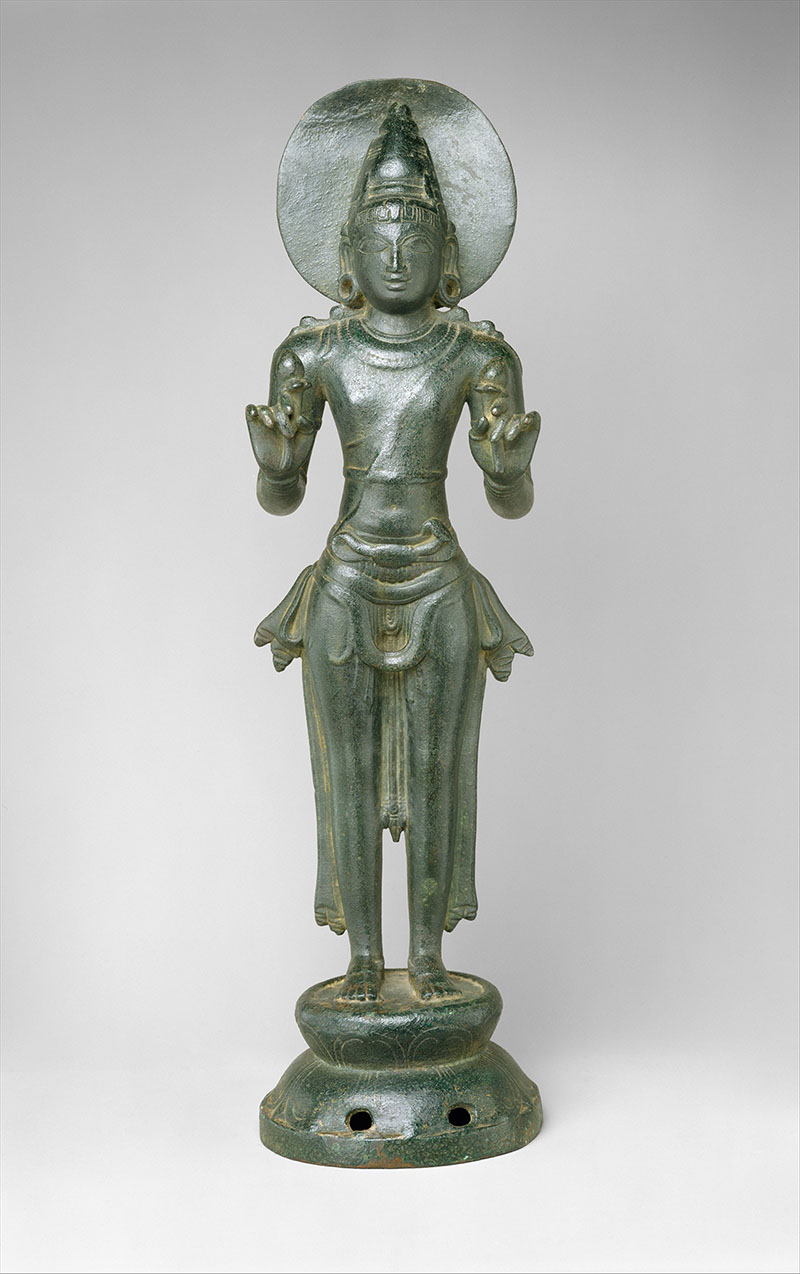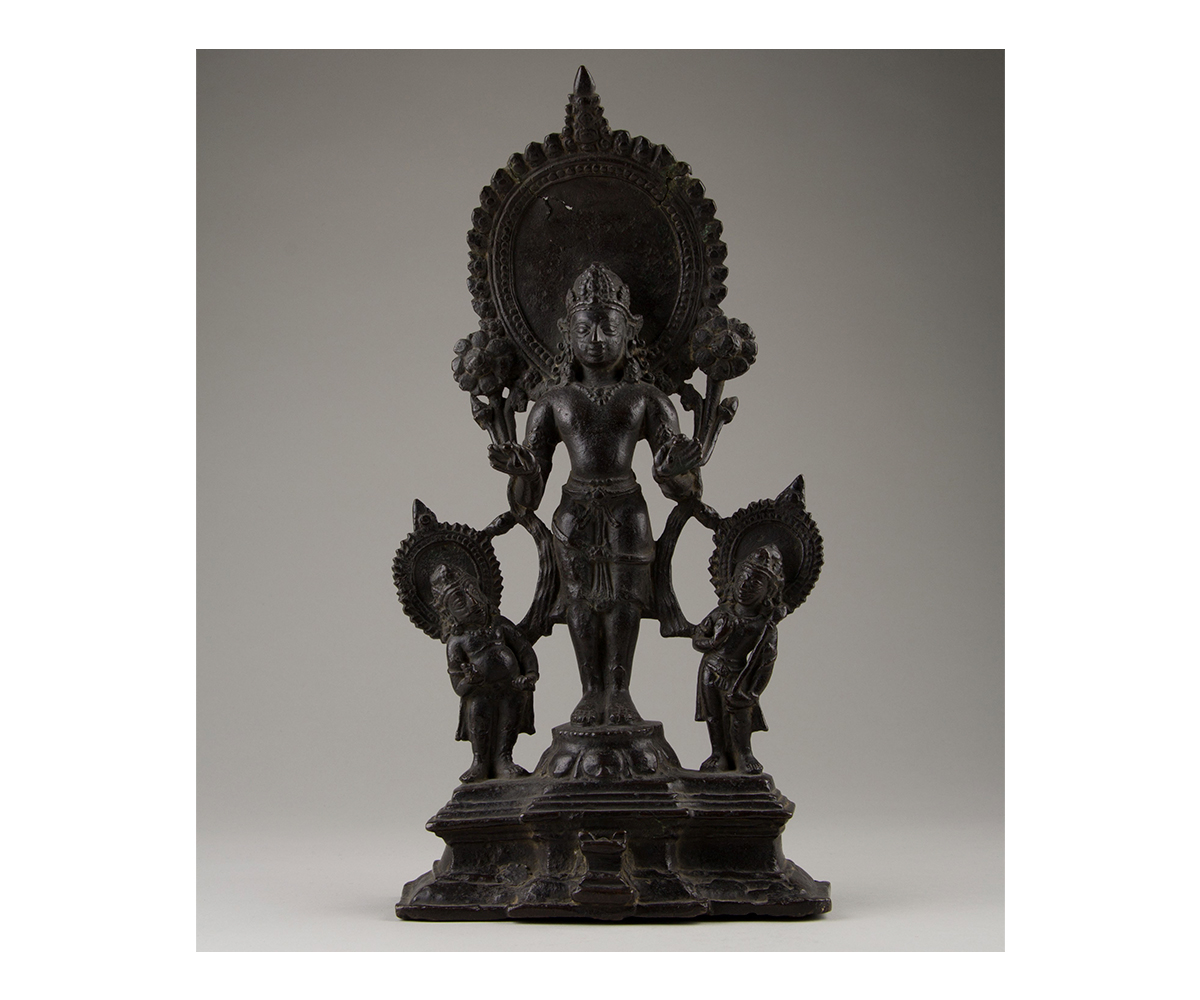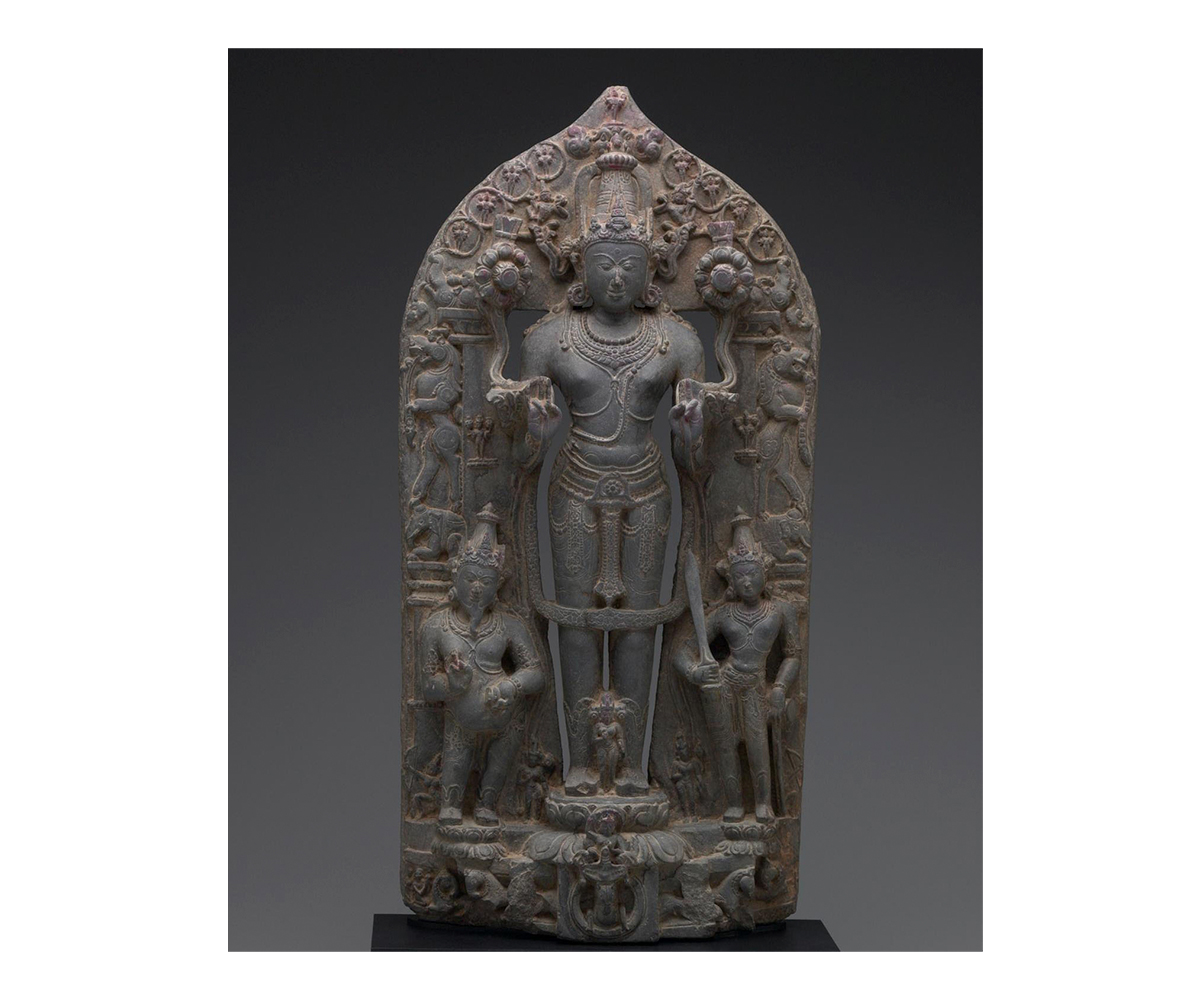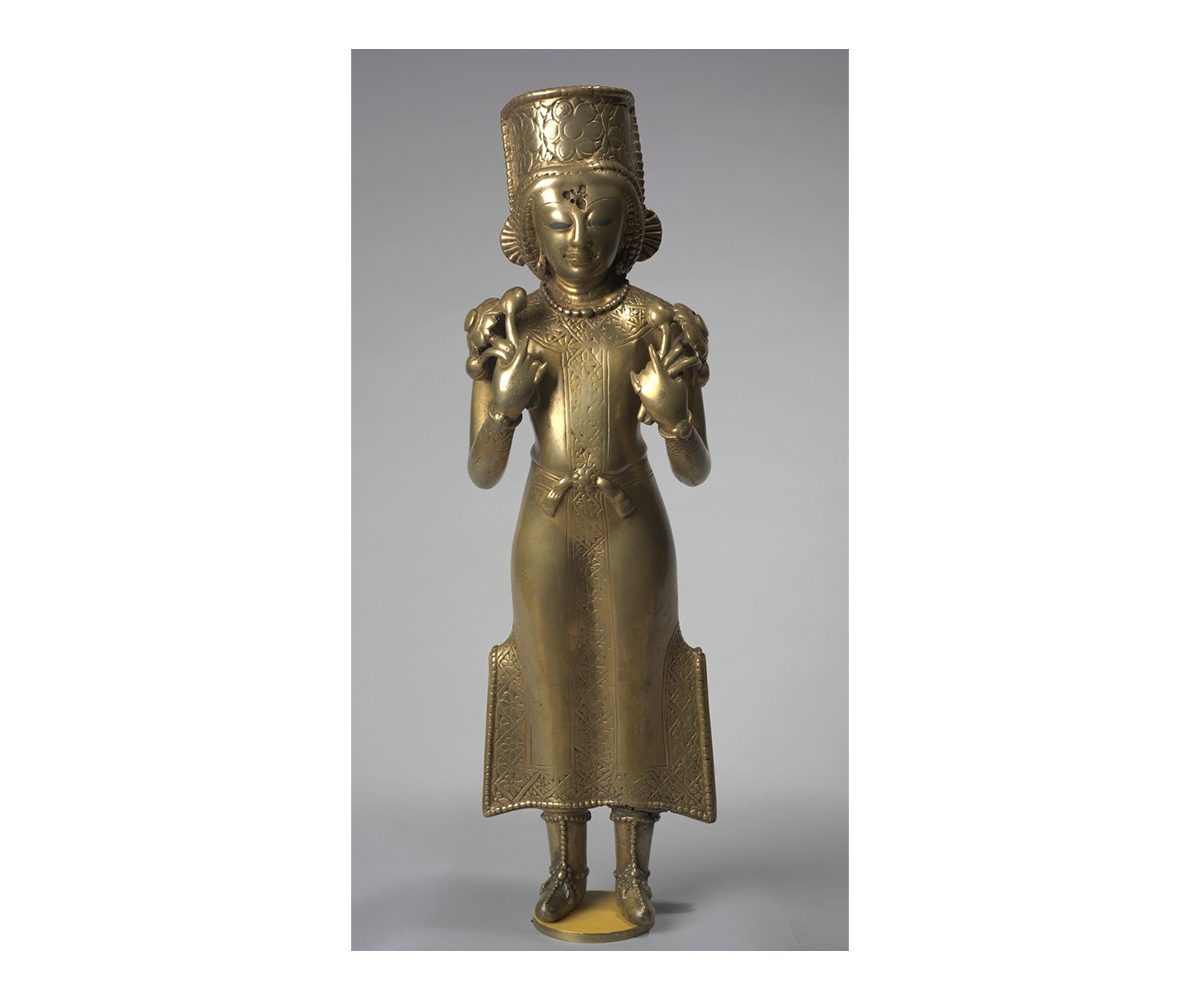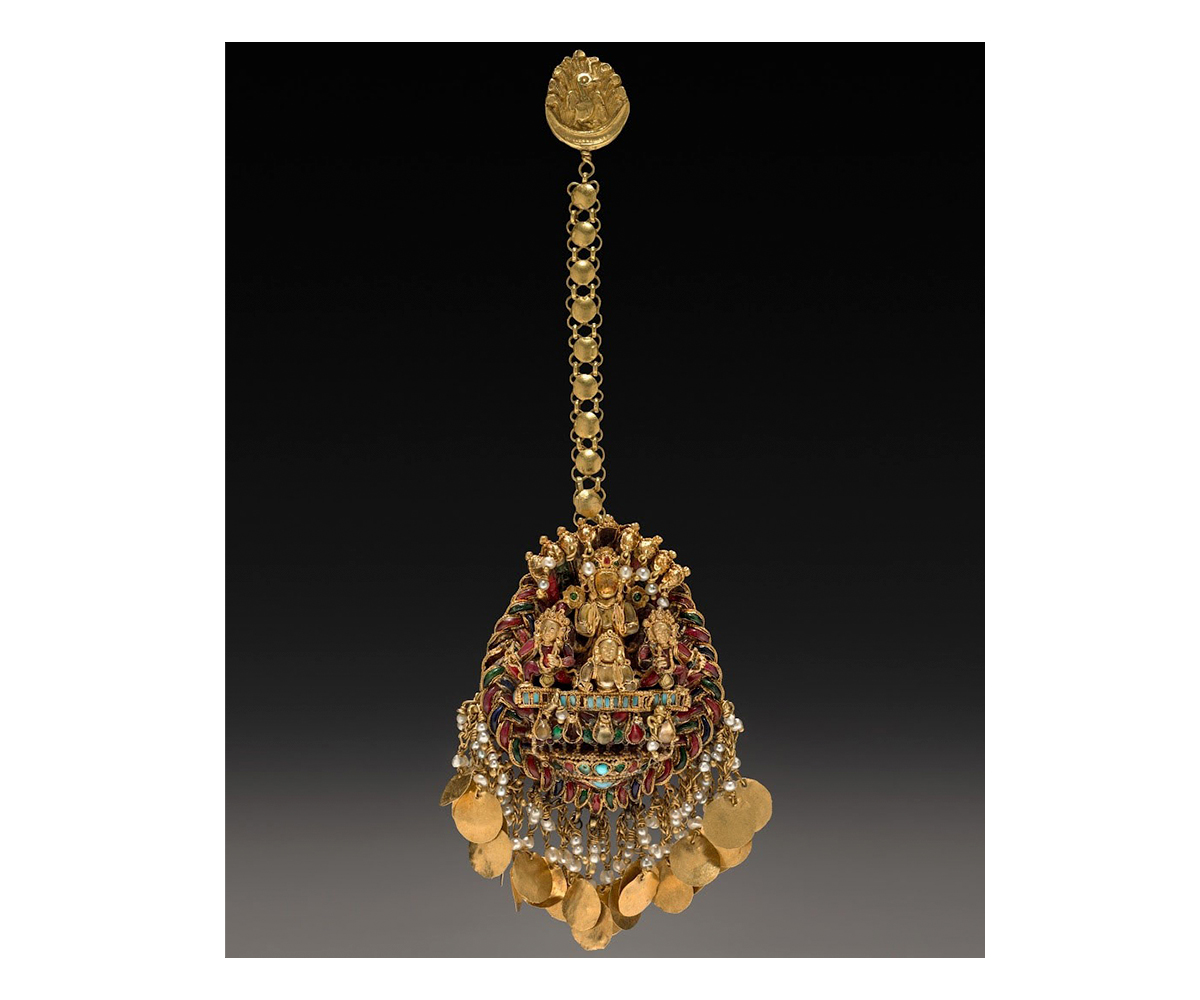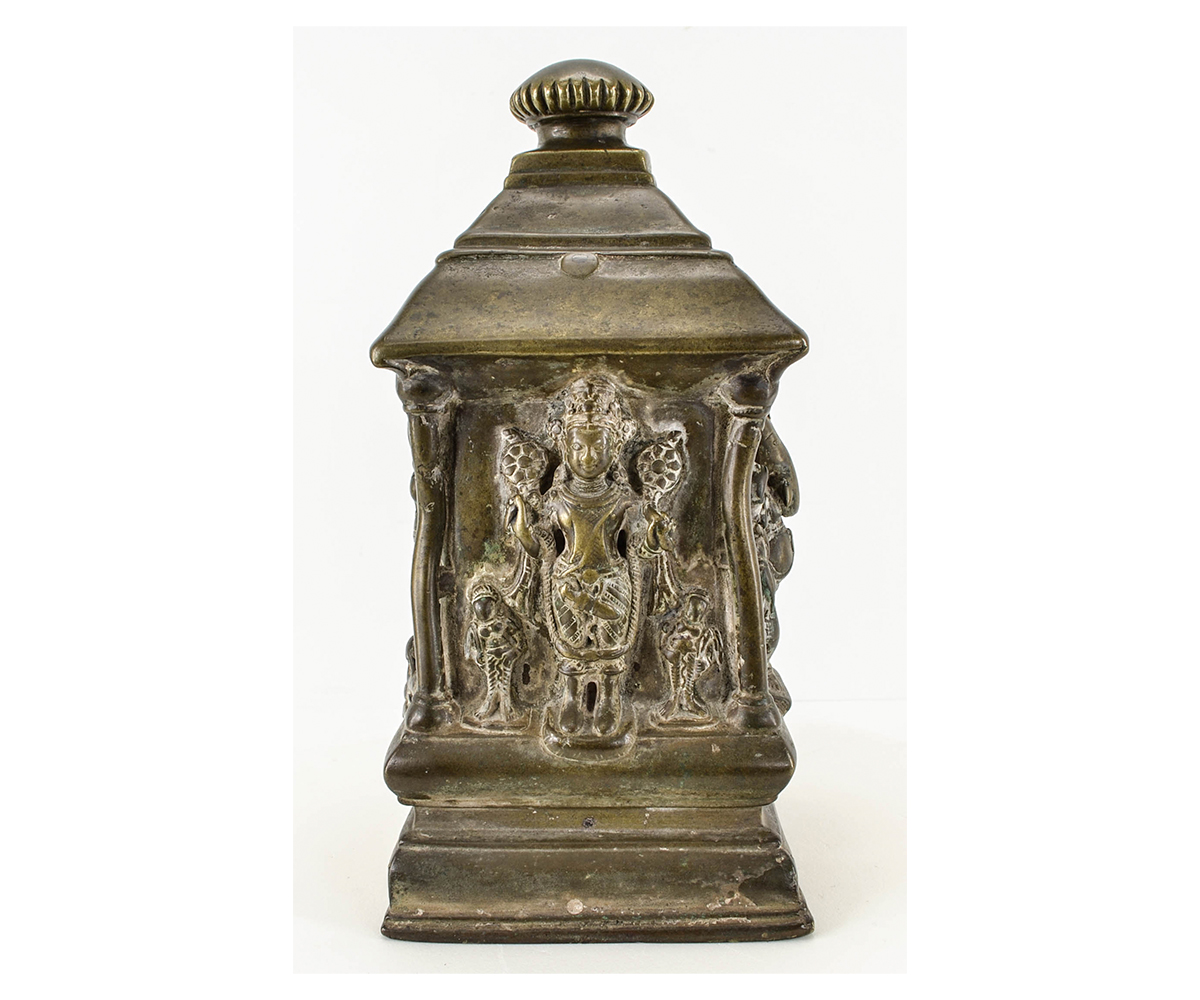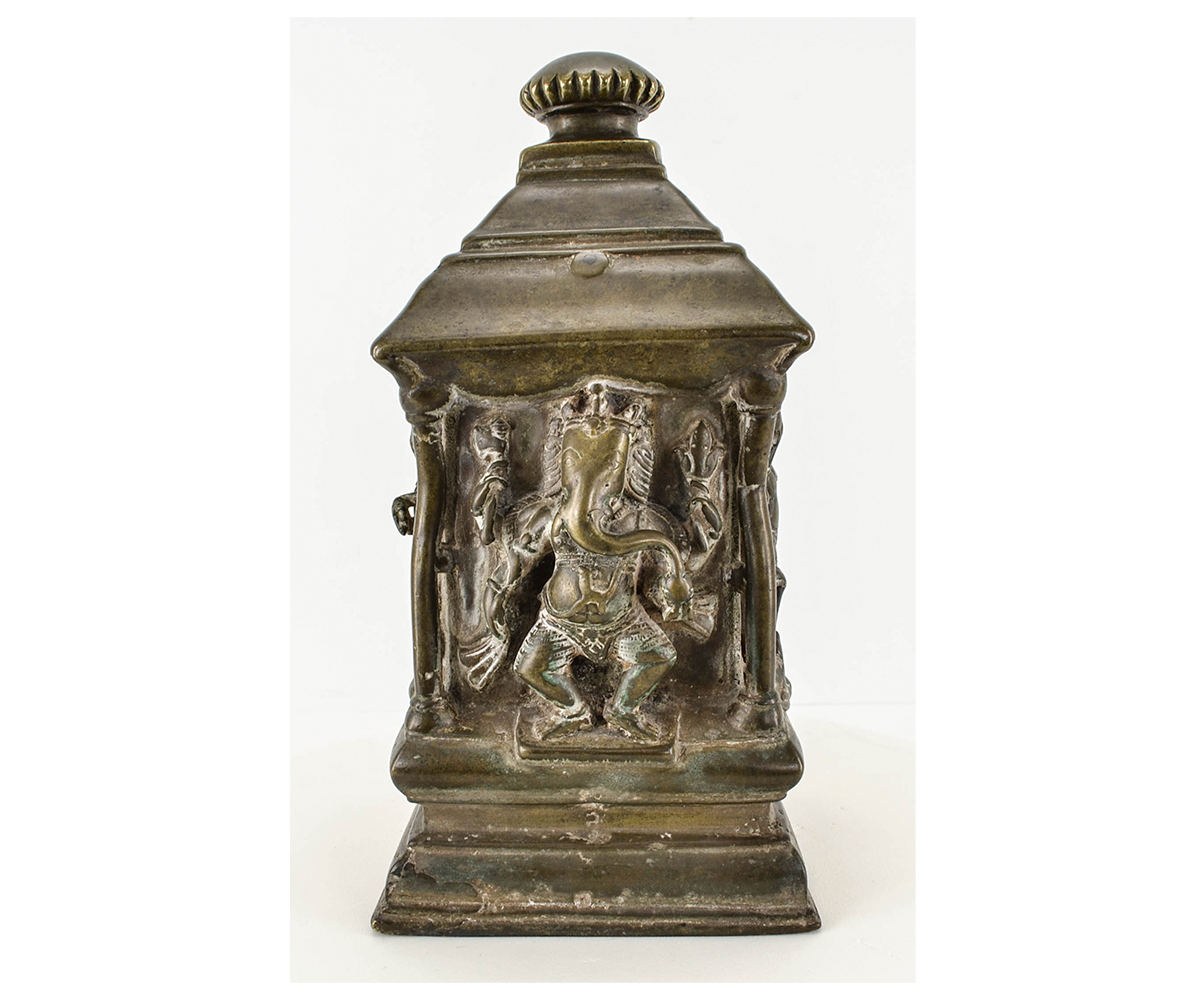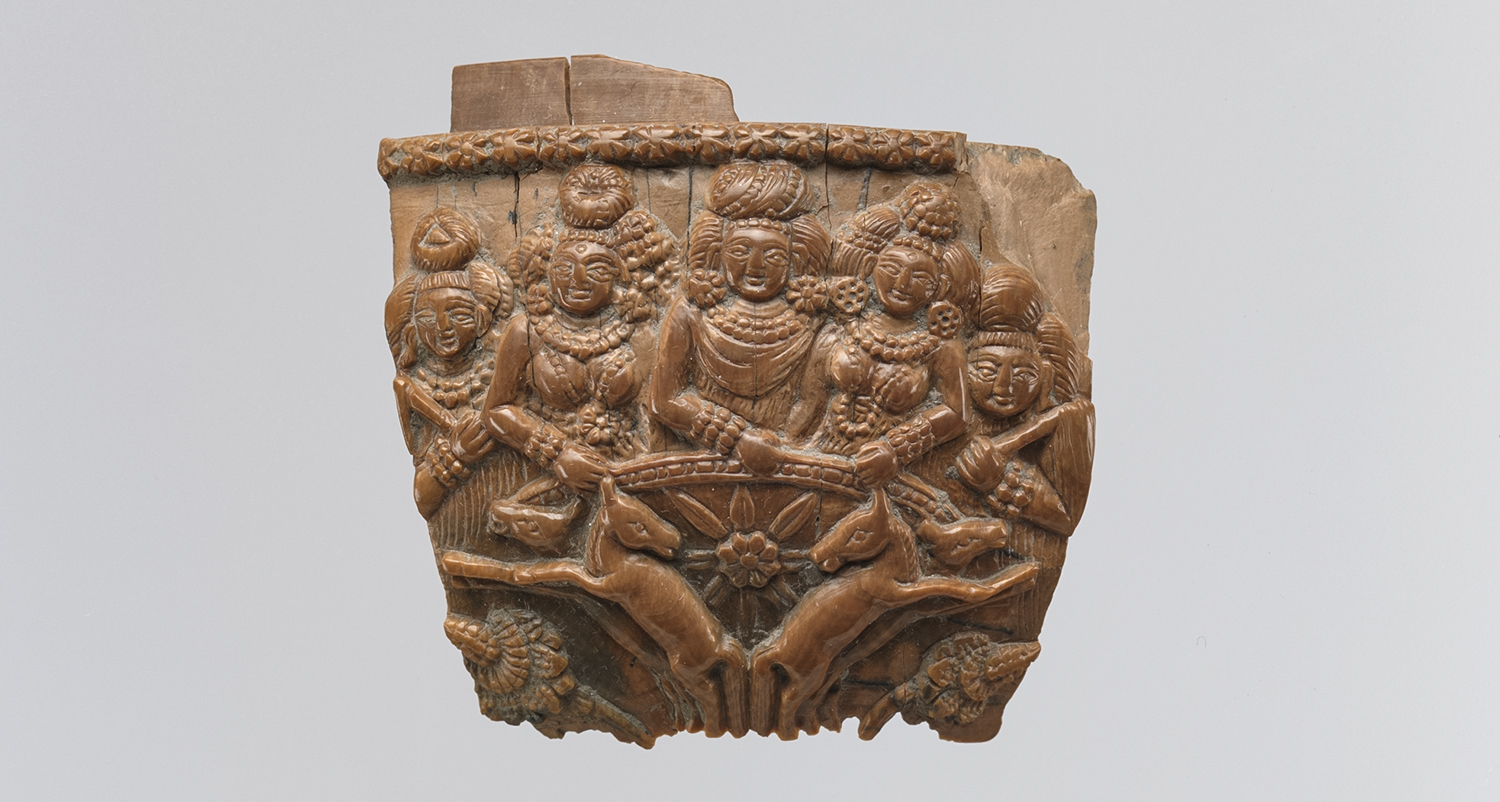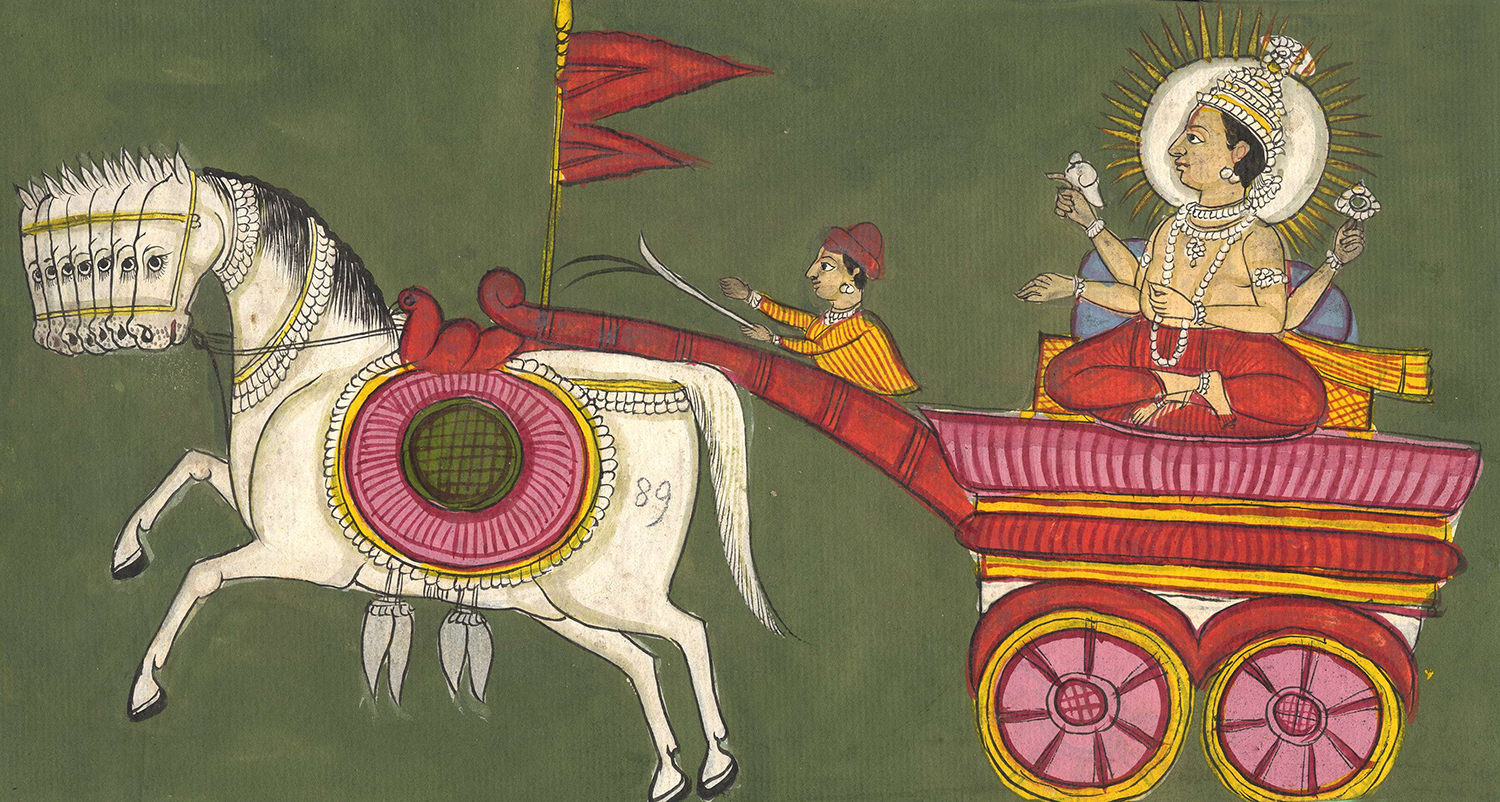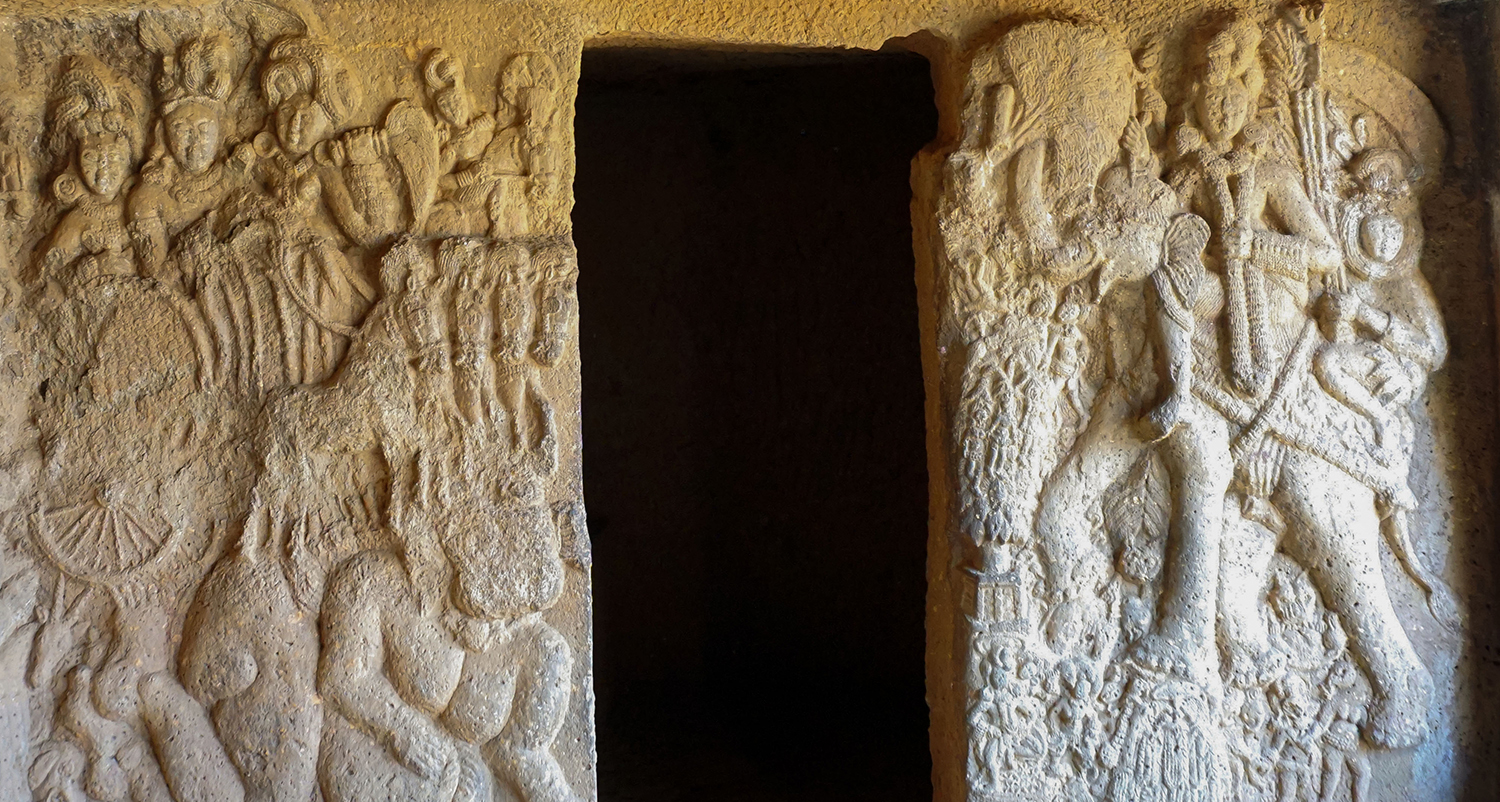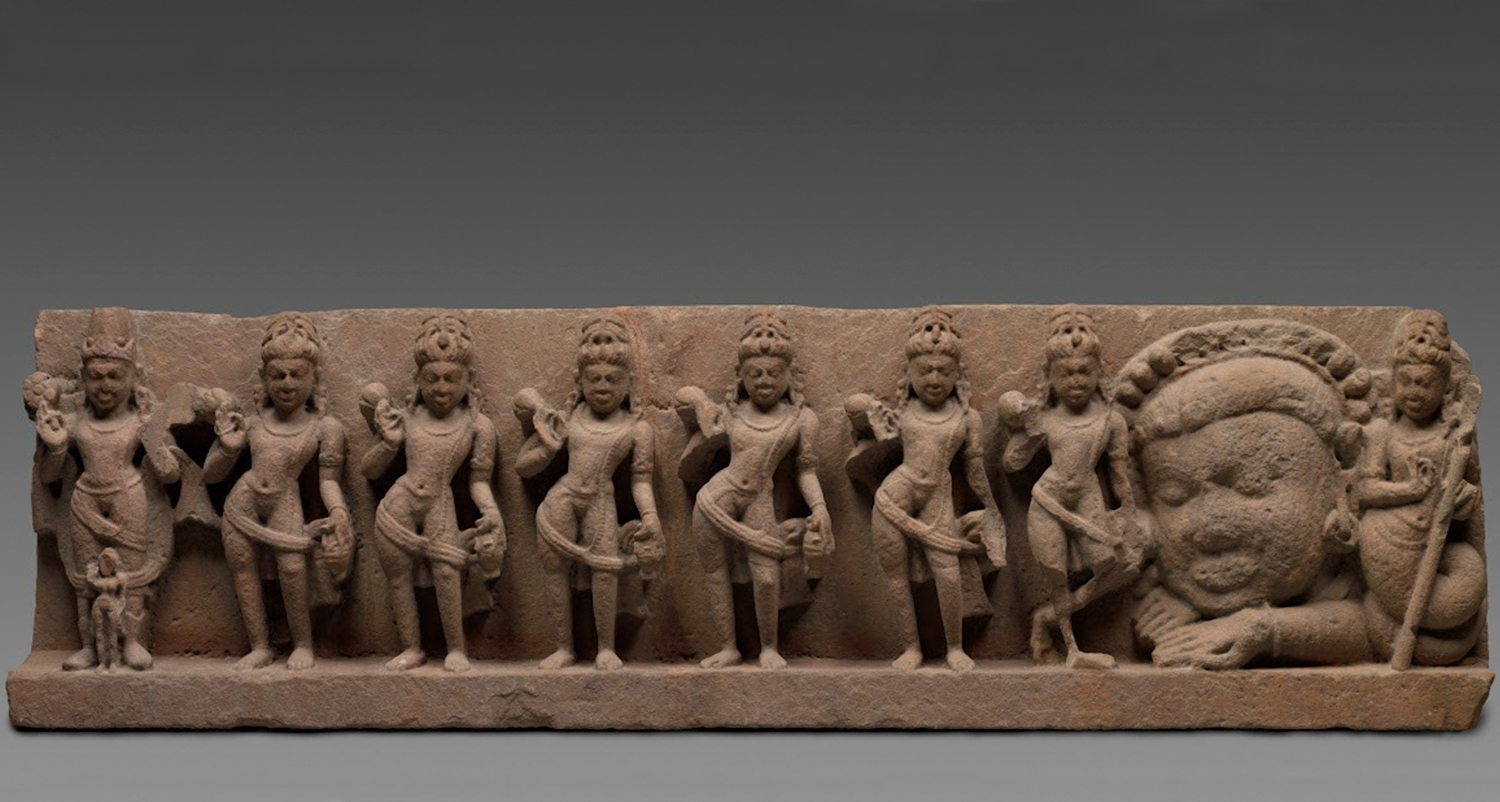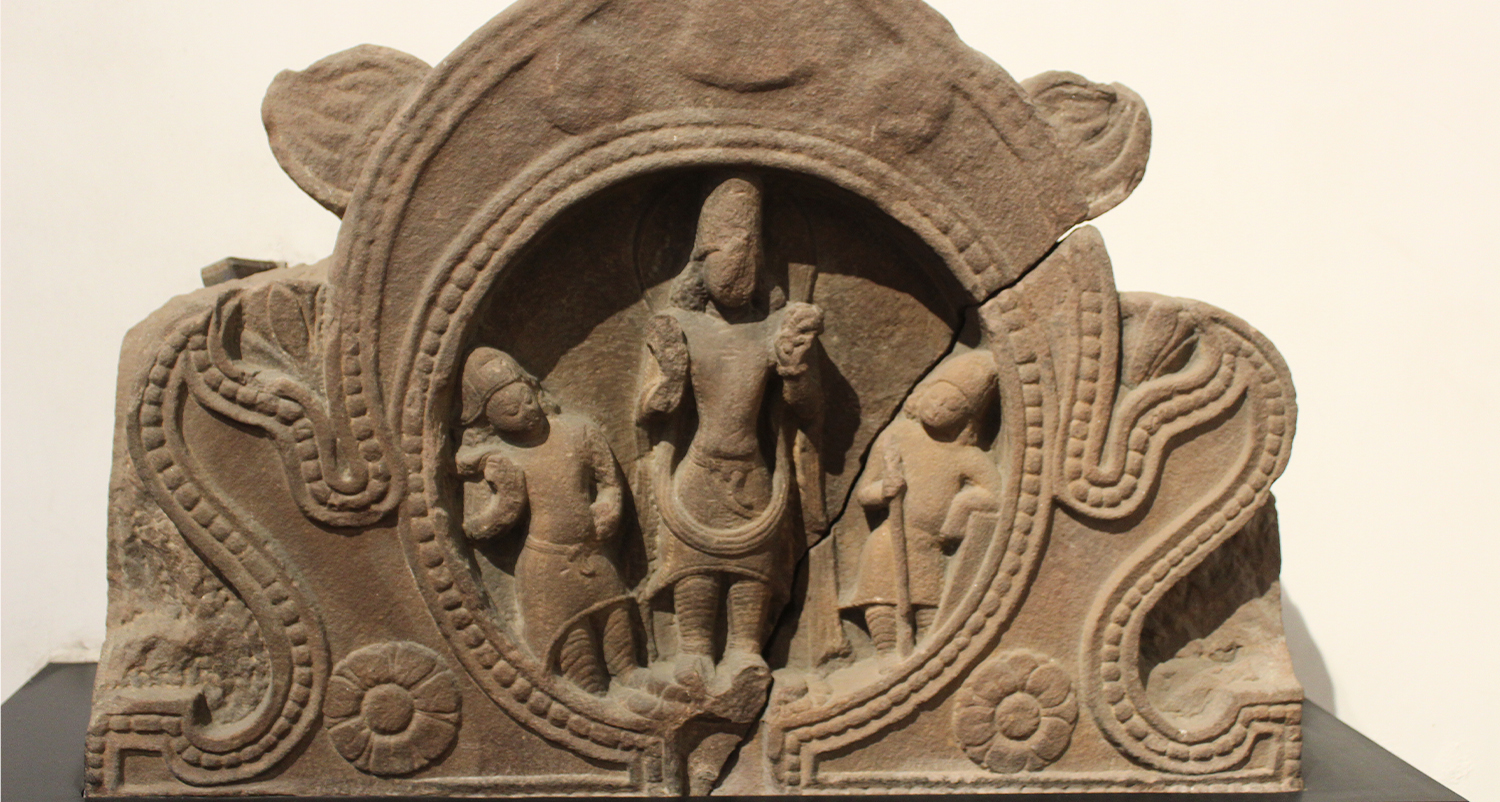ARTICLE
Surya
While usually depicted as male, the figure of Surya is prescribed by some authorities to be represented with one half as a dark complexioned woman. This metaphor is likely to derive from the inseparability of the light and brightness of the day from the darkness of night, which is also exemplified in a Puranic story. Here, Surya’s wife Samjna, overwhelmed by his luminosity, deserts him, leaving behind her maid Chhaya (‘shadow’) as his companion. Later in the story, Surya’s brilliance is moderated by Samjna’s father, the cosmic architect Vishwakarma, who takes away some of it, using it to forge the weapons of other deities such as Vishnu, Shiva, Kartikeya.
Surya’s chariot, which became part of his iconography relatively late, is typically depicted as one-wheeled, with the charioteer Aruna handling the reigns of seven horses, or at times, one horse with seven-heads. These motifs are seen in images from present-day Odisha, West Bengal and Bihar in India. While Surya iconography from southeastern India excludes any attendant figures, a range of such figures are seen in various combinations across most other representations. He is commonly flanked by the goddesses Usha and Pratyusha and often accompanied by four consorts, Rajni, Suvarna, Suvarchasa, and Chhaya. According to the Matsya Purana, where he is described as four-armed, Surya is attended by sword-wielding guardians Pingala and Danda on either side, with two of his hands placed upon their heads or holding a shield and spear, while the other two hold sunbeams. The figure of Brahma is also placed alongside them, holding a pen. Some representations also include Surya’s sons, while others show him surrounded by the other celestial bodies of the navagraha — Chandra, Mangala, Budha, Shukra, Brihaspati, Shani, Rahu, and Ketu.
The eleventh-century Modhera Sun Temple in Gujarat, India and the thirteenth-century Konark Sun Temple in Odisha, India are among the few significant temples to the solar deity still standing. In an architectural manifestation of Surya’s chariot iconography, the structure of the Konark Sun Temple emulates a chariot, with the original design incorporating seven sculpted horses at the front and twelve pairs of wheels carved along its plinth, the former presumed to correspond to the days of the week and the latter to the months or signs of the zodiac. In temples employing the Panchayatana system, the shrine to Surya often occupies the central space, surrounded by subsidiary shrines dedicated to the four other deities. As part of the navagraha, Surya is often depicted on ceilings of temples and saptamatrika panels.
Based on various iconographic similarities, Surya is associated with solar deities from other traditions, such as the Indo-Iranian Mitra and the Greek Helios, and his form in Indian images shows these influences. Surya images seen in Bodhgaya in present-day Bihar and Bhumara in present-day Madhya Pradesh, for instance, depict him with curled locks of hair and a toga-like garment, much like Helios.
Worship of Surya as a primary deity waned from the twelfth century onwards, except for a small number of Saura devotees spread across central India. However, the figure has remained an important part of Hindu mythology and worship. Besides Surya’s place in the navagraha and Panchayatana, he is invoked in several rituals and hymns, one of the most prominent being the Gayatri mantra, which is addressed to him.
Bibliography
Britannica, T. Editors of Encyclopaedia. “Surya.” Encyclopedia Britannica. May 5, 2023. Accessed July 12, 2023. https://www.britannica.com/topic/Surya.
Cartwright, Mark. “Surya.” World History Encyclopedia. June 23, 2016. Accessed July 12, 2023. https://www.worldhistory.org/Surya/.
Gupte, R. S. Iconography of the Hindus, Buddhists and Jains. D. B. Taraporevala Sons & Co. Private Ltd., 1972.
Huntington, Susan L., and John C. Huntington. The Art of Ancient India: Buddhist, Hindu, Jain. New York: Weatherhill, 1985.
Rao, T. A. Gopinatha. Elements of Hindu Iconography. Vol. I. II. Madras: The Law Printing House, 1914.
Sivaramamurti, C. The Art of India. New York: H. N. Abrams, 1977.




